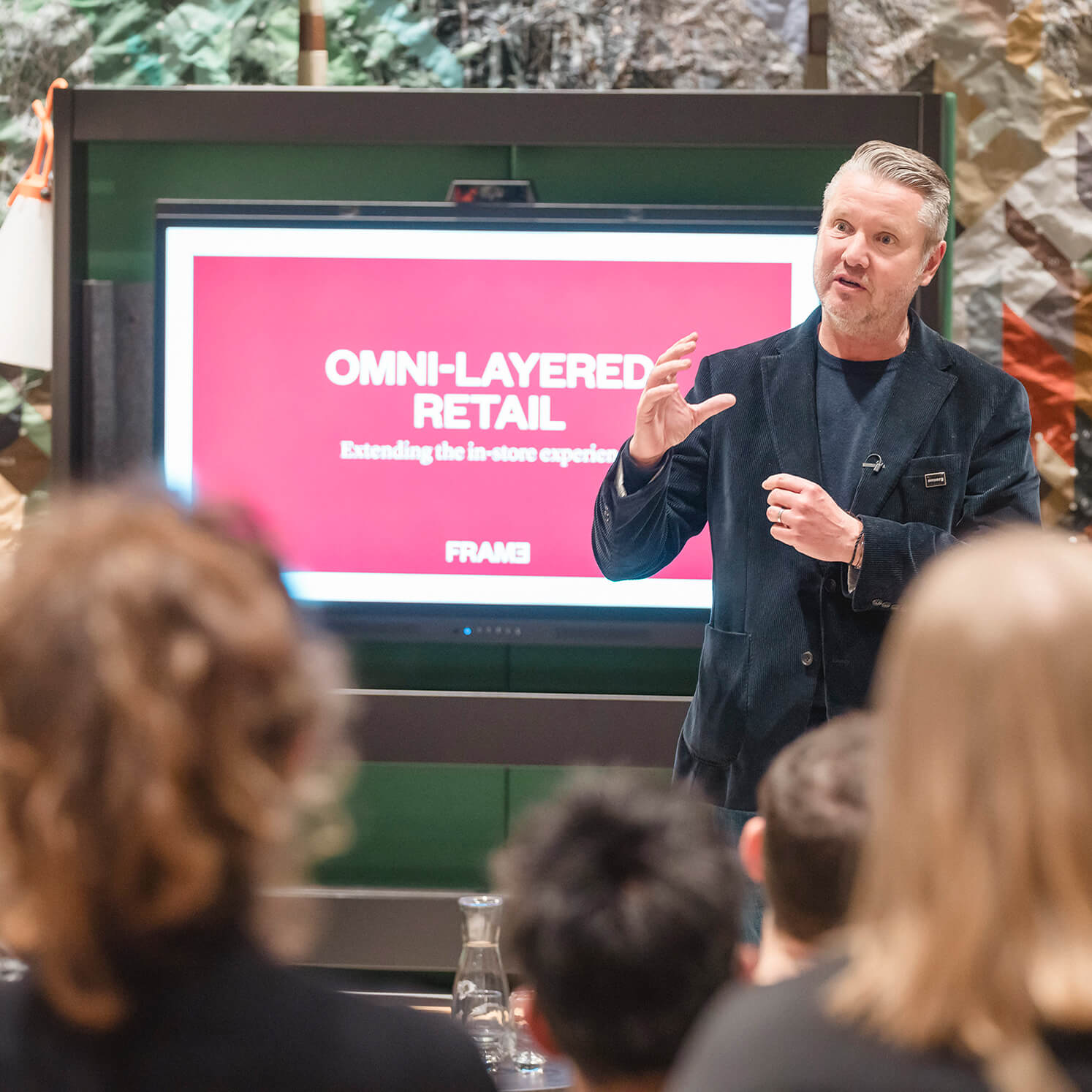Where is retail going? How are designers and young brands dealing with their retail spaces?

What kind of shopping experience brings meaningful added value for customers and brands?
These highly topical questions were the focus of the Ansorg Panel Talk at Vitra Tramshed, London. International designers and brand protagonists from various industries participated as panelists. For more than 90 minutes, exciting brand concepts and stores were presented, and lively discussions were held with an audience of more than 80 actively participating guests.
Alain Visser, CEO Lynk & Co., Sweden
The automotive industry is boring, in the 90s even the introduction of a childrens’ corner in car showrooms was considered a "bold" innovation. One of the Lynk & Co. Brand values is "Wow" - as a challenger and newcomer, we need to stand out and make the difference clear, especially as we are taking a completely new approach to the automotive industry with the subscription model.
Lynk & Co. showrooms are in the best inner-city locations of metropolitan areas close to Versaces and Pradas. The aim is to attract customers' attention and curiosity and draw them into the showroom. They should discover the Lynk & Co. Club even if they've never heard of us.
They first think it's a bar, then a concept store, and finally they discover a car. There is only one car in it (Showroom Rome with no car at all). Over 90% of the store is workspace, bar, lounge, meeting rooms and "hilarious" restrooms - overall, the showrooms are colourful and surprisingly designed, with few recurring elements. Each showroom also has elements of a local story. The key is to surprise customers and create moments of experience. Our club should be so good that the customer spontaneously talks about it at home. Hence the "wow experience."
We are an online company. You can build business online, but not a brand. For that you need physical touchpoints, contact with customers and great experiences. We see a global trend that people spend more money doing things than buying things. The experience is the focus.
For us, the showrooms are part of the marketing organization; there are no targets for sales figures. The crucial thing is that customers feel comfortable with us and come into contact with the brand.
Sanaz Dizaj Parham, Brand Director Axel Arigato, Sweden
Axel Arigato as a young brand thrives on creating a community for and with our customers. It should be spaces where our customers want to go, not where they should go. For example, we host over 100 community centric events per year in the stores. These are inspirational and educational events, e.g., panel talks, parties, art-signing, etc. Artists can also use the stores for their own exhibitions. It's about creating energy around the brand and intensifying the connection with our customers. The stores are never the same, stocked in a reduced way, without a check-out counter, and above all designed very flexibly, so that the spaces can be used in the most diverse ways, whether as a store or a night club. Development and openness to new things are elementary.
Daan Lucas, Founder Random Studio, Netherlands
I compare retail to the processes in a garden. A garden only becomes lively and interesting when something new is created in it and things complement each other. In a figurative sense, it is not the brand or the designer alone who should determine how a store is made, but rather other groups, especially customers, who should participate in the process. The focus should not be on the brand's message, but on participation and commitment. It is much more valuable when customers report about the store on their channels than when the brand communicates what it is or wants. Sharing with customers keeps the brand much more connected to them. And customers feel more comfortable in spaces where they feel invited and treated as equals.
Stores open to the whole public, they should be versatile, able to change permanently, flexible like a theatre stage. At Random Studio, we very much combine space and technology. We use technology as a tool that is supportive, so that the space can react, for example to the number of customers or time of day and change its atmosphere.
We're seeing right now that Pharrell Williams has been appointed design director of Louis Vuitton. In the past, the focus was much more on design and products sold in the store. With him, it's going to be much more about culture, and the stores could change towards clubs.
Simon Parry, Ansorg UK
The general well-being, atmosphere, and length of stay in a store are significantly influenced by the lighting. In the future, it will be even more important to enable areas for individual experiences and to give storytelling and focal points additional space. Light can set moods, create an atmosphere, and support the in-store experience. Examples include "Detox" zones for relaxation or changing rooms ("YOUZON") that literally lift the customer onto the stage. Here he stands under optimized light, which flatters him and his clothes. Shopping becomes a feel-good moment.
The perfectly staged use of light within the framework of a holistically planned concept supports brand, architecture, and the quality of in-store experience. That is precisely what makes Ansorg stand out. We listen carefully and always implement tailor-made lighting solutions.